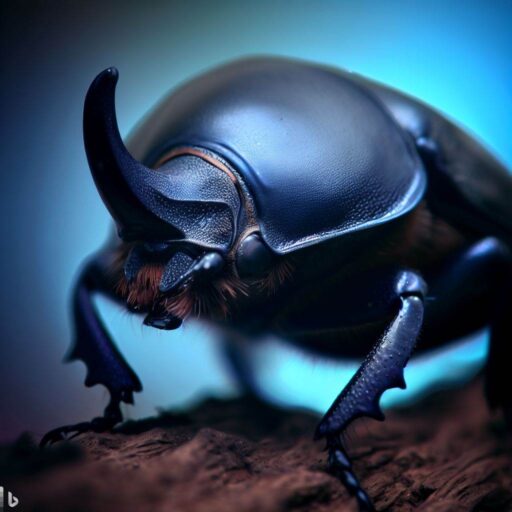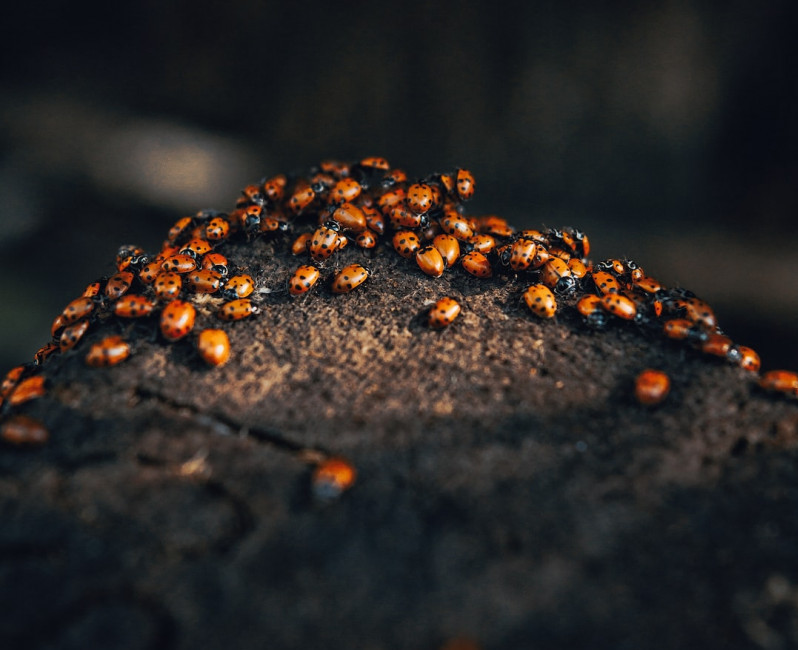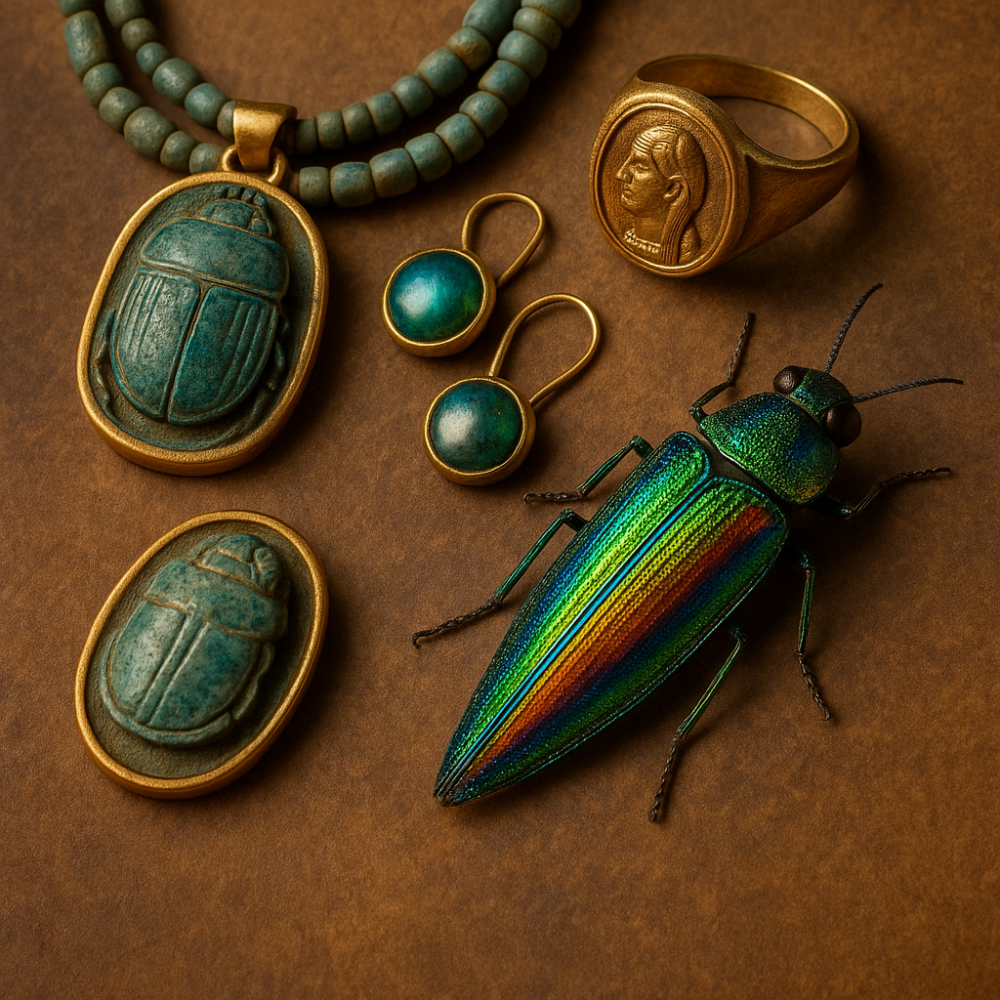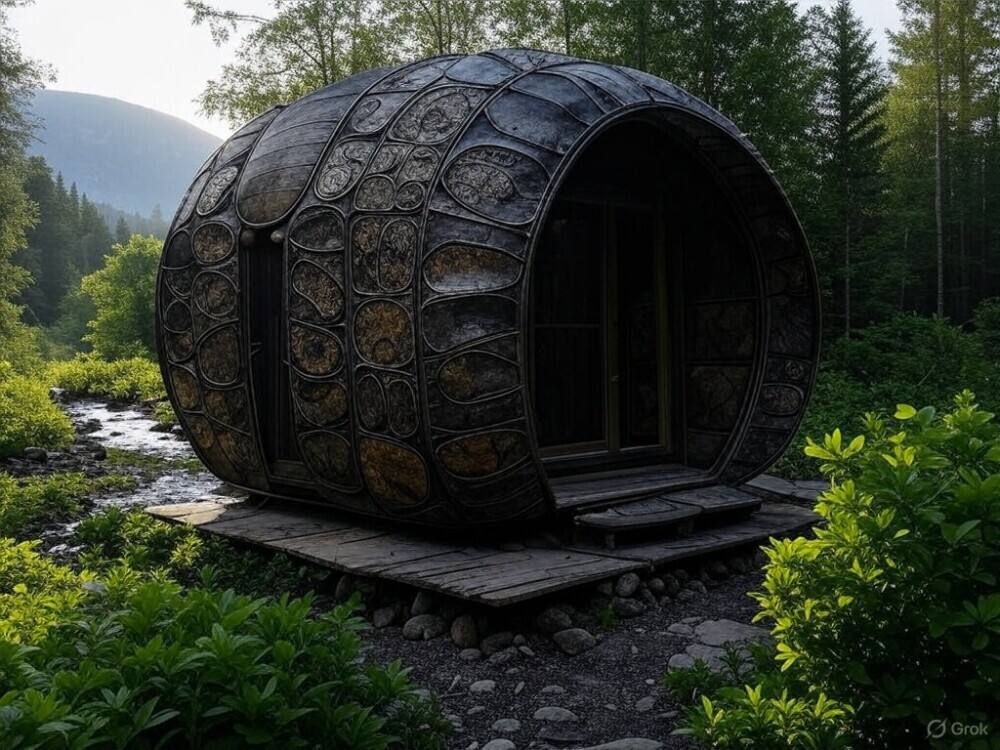.jpg)
- Scarab beetles have diverse feeding habits: Scarab beetles eat a variety of food sources, including decaying matter, plant roots, fungi, and dung. Their diet varies depending on the species and their life cycle stage.
- Scarab beetles play an important role in nutrient cycling: By consuming decaying matter and dung, scarab beetles contribute to the decomposition process and help to recycle nutrients back into the ecosystem. This is crucial for maintaining soil fertility and supporting plant growth.
- Scarab beetles use sensory cues to find their food: Scarab beetles have specialized organs and antennae that help them locate food sources. They are attracted to specific odors and visual cues, allowing them to find suitable food for feeding and reproduction.
Scarab beetles, fascinating creatures of the insect world, have piqued the curiosity of many. In this exploration, we will uncover the main characteristics of these beetles, along with their scientific names and subfamilies.
Prepare to delve into the realm of scarab beetles, discovering intriguing facts and insights that will leave you in awe of their diverse nature.
Main Characteristics

Scarab beetles possess features that make them stand out from other beetles. We can observe and examine these features to get a clearer picture of these insects.
Studying the main characteristics of scarab beetles helps us comprehend their ecological role and how they interact with their environment.
By understanding what scarab beetles eat, how they locate their food, and their contributions to ecosystems, we can come up with successful conservation strategies to safeguard these essential organisms.
Scientific Name and Subfamilies
Scarab beetles are categorized as Scarabaeidae. This family is split into four subfamilies – Scarabaeinae, Melolonthinae, Rutelinae and Dynastinae. Each one of these has its own special characteristics and behavior.
The table below shows the scientific name of each subfamily:
| Subfamily | Scientific Name |
|---|---|
| Scarabaeinae | Scarabaeus sacer |
| Melolonthinae | Melolontha melolontha |
| Rutelinae | Rutela species |
| Dynastinae | Dynastes Hercules |
Scarabaeidae, otherwise known as scarab beetle family, includes a variety of species. Every subfamily has its own special traits and abilities.
Scarabaeinae, for instance, contains dung beetles. These are essential for nutrient cycling as they feed on animal poop.
On the other hand, Dynastinae consists of large beetles, such as Hercules beetle. They mostly eat decaying wood.
By understanding the scientific name and subfamilies of scarab beetles, we gain valuable insights into their ecology and evolutionary history.
What Do Scarab Beetles Eat?

Scarab beetles have an impressive diet! They eat plant matter, animal material, and even dung.
The nutrients from their decaying matter-based meals help decompose organic material and keep the ecosystem healthy.
Not only that, but they also feed on the dung left by large herbivores. This helps to recycle the nutrients in it, and keeps the balance of nutrients in the environment.
Additionally, some species of scarab beetles have adapted diets. Some larvae consume plant roots, while others prefer wood or fungi.
Fascinatingly, scarab beetles play an essential role in maintaining the ecosystem’s balance with their unique dietary habits.
Why Do Scarab Beetles Eat What They Eat?
Scarab beetles have dietary needs and preferences. They mainly feed on decaying plant matter, such as fruits, leaves and wood.
By consuming these organic materials, they assist with nutrient recycling and decomposition processes.
Scarab beetles eat dung too. This is beneficial as it helps them access nutrients not in decaying plant matter.
Some species have specific adaptations for eating dung, like special mouthparts and strong digestive systems.
Scarab beetles may eat nectar and pollen too, as a supplemental food source. This could help with pollination.
Scarab beetles’ feeding habits depend on their environment and available food sources. They can consume and break down decaying plant matter, dung and flower resources.
To study their role in ecosystems and develop conservation strategies, it’s important to understand their dietary preferences.
In ancient Egyptian civilization, scarab beetles were revered and connected to rebirth and resurrection. The dung beetle, a type of scarab beetle, was thought to represent the sun god Ra.
It rolls balls of dung that look like the sun. This shows how important scarab beetles were historically and culturally, adding an interesting factor to their dietary habits.
How Do Scarab Beetles Find Their Food?
Scarab beetles have an amazing skill in finding food. They use a mix of visuals and scents to find nourishment.
They like decaying organic matter, such as dung or rotting plants, which are their main meals. They have a sharp nose and can detect the distinctive smell of decomposing material from far away.
Then, with their special mouthparts, they eat the decaying matter.
This ability to locate and consume their preferred food is vital for their survival and is essential for the ecosystem.
To find food, scarab beetles use a sophisticated set of sensory adaptations. Their huge compound eyes allow them to see small movements, helping them spot possible food sources.
They are drawn to bright colors and contrasting shapes, helping them identify ripe fruits with lots of nutrients.
They also have sensitive antennae which can detect chemical signals from their desired food. With their smell, they can guide themselves through their environment and find hidden decaying organic material.
In all, scarab beetles use sight and aroma to locate food, benefiting from their highly specialized organs.
Unique to scarab beetles is their ability to use the sun to navigate. Scientists have noticed them using the sun’s position in the sky to work out the direction they are traveling in.
By keeping the same direction relative to the sun, they stay on track and can return to their food sources. This means they can use the sun like a compass, ensuring they don’t get lost.
In general, scarab beetles show great versatility and cleverness in getting food, taking advantage of both senses and environment.
In a fascinating discovery, researchers saw beetles behaving in an unexpected way when looking for food.
In a lab, they were offered two sources – one with fresh dung and one with a mixture of fresh dung and the synthetic scent of dung beetles.
To everyone’s surprise, the beetles chose the one with the synthetic smell, even though it had no other beetles.
This suggests that scarab beetles don’t only rely on chemical cues, but also on the presence of other beetles to find food.
This adds to our comprehension of the complex methods scarab beetles use to get their meals, showing the complexity of their foraging behavior.
The Role of Scarab Beetles in Ecosystems
Scarab beetles are essential to ecosystems.
They consume various materials, like feces, carrion, decaying vegetation, and fungi. This helps with decomposition and releases nutrients back into the environment.
Burrowing activities of scarab beetles improve soil structure, drainage, and nutrient distribution.
This contributes to plant growth and overall productivity.
Scarab beetles also feed on fungi, which helps control their population.

This highlights the intricate relationships within ecosystems.
Scarab beetles recycle nutrients, assist in decomposition, and promote healthy soil conditions.
This maintains ecological balance. Understanding and conserving these insects is essential for preserving ecosystem health and functionality.
Conservation and Management of Scarab Beetles
The conservation and management of scarab beetles is essential for their survival and for maintaining a healthy ecosystem.
They are key as decomposers, pollinators, and food for other animals. Scarab beetles mainly eat plants, such as leaves, fruits, and flowers.
Protecting their natural habitats – forests, grasslands, and agricultural fields – is vital for their conservation and management.
Scarab beetles have delicate life cycles and are sensitive to environmental changes. They need specific plants for their survival.
This makes preserving and restoring their habitats a must for their conservation.
To do this, we must safeguard natural areas, encourage sustainable farming, and reduce the use of damaging pesticides.
Furthermore, managing scarab beetle populations is important to keep them from causing damage to crops and ecosystems.
We can employ integrated pest management techniques, like using parasitic wasps to control beetle numbers.
Cultural practices, like crop rotation and planned planting, can also help to reduce beetle infestations and limit the need for chemical pesticides.
In addition to conservation, raising awareness about scarab beetles is essential.
Educating people and getting communities involved in conservation initiatives can increase support and participation.
Knowing the connections between scarab beetles and their habitats will motivate people to make decisions that help with their conservation and management.
As an example, a research team went to a rain forest to conserve scarab beetles.
Through their investigations, they found out that certain tree species were vital for sustaining a varied beetle population.
They then worked with the local community to create protected areas, securing the survival of the beetles and their environments. This shows the importance and success of scarab beetle conservation efforts.
Conclusion
Scarab beetles are essential organisms. They help balance ecosystems by breaking down decaying matter.
This process recycles nutrients for other plants and animals. It also helps prevent disease in arid regions.
Scarab beetles have strong jaws and can chew through tough things.
Some even have specialized mouthparts for drinking sap. This has made them successful and diverse across habitats.
When you encounter scarab beetles, appreciate them!
They are beneficial and should not be disturbed or harmed. They contribute to the environment’s overall balance.
Some Facts About What Do Scarab Beetles Eat:
- ✅ Scarab beetles have diverse feeding habits, with some species feeding on manure or decomposing plant materials.
- ✅ Other species of scarab beetles feed on roots, leaves, or fungi.
- ✅ The family Scarabaeidae includes agricultural pests, such as the June beetle, rose beetle, and Japanese beetle.
- ✅ The dung beetle, Scarabaeus sacer, feeds on dung, which it forms into balls for its offspring.
- ✅ Scarab beetles are known for their unique behavior of rolling dung balls and laying eggs inside for the hatched larvae to feed on.
FAQ
What do scarab beetles eat?
Scarab beetles have diverse feeding habits. Some species feed on manure or decomposing plant materials, while others feed on roots, leaves, or fungi.
What are the subfamilies of the family Scarabaeidae?
The family Scarabaeidae includes subfamilies such as Cetoniinae (flower chafer), Melolonthinae (chafer or June beetle), Rutelinae (shining leaf chafer), Scarabeinae (dung beetle), and Dynastinae (rhinoceros beetle).
Are scarab beetles considered agricultural pests?
Yes, the family Scarabaeidae includes several agricultural pests, including June beetles, rose beetles, and the Japanese beetle.
What is the unique ability of scarab beetles’ front legs?
The front legs of scarab beetles often have toothed or scalloped edges to aid in digging.
What is the African Goliath beetle?
The African Goliath beetle is one of the largest and heaviest insects known. It belongs to the family Scarabaeidae and is a species of scarab beetle.
What senses and abilities do scarab beetles possess?
Scarab beetles have unique antennae that end in three flattened plates, forming a club. They also have the ability to roll dung balls with their hind legs, demonstrating their strength and manipulation skills.





Leave a Reply